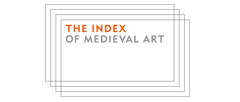ScholarWorks > Arts & Sciences > Medieval Institute Publications > STUDIES_IN_ICONOGRAPHY > Vol. 44 (2023)
Abstract
The great sculpted portals of the Middle Ages were perhaps the leading form of public visual media of the time, and their cycles of the Zodiac and Months were staples of large-scale public art in Europe for centuries. The appearance of these cycles at Sainte-Madeleine at Vézelay (c. 1120–1132) is the earliest in cyclical form in Europe (the configuration found in macrocosmic/microcosmic images). In this important manifestation, there are a number of apparent irregularities that scholars have traditionally dismissed as "mistakes." However, these irregularities can be shown to have been caused by an application of the medieval theory of zodiacal melothesia, a recognition of which leads to not only a deeper understanding of the role of science in medieval works of art but also of the desire for complexity in the object/viewer dynamic that brought the previously scientific cycle into mainstream public art at Vézelay in the first place.
Recommended Citation
Rudolph, Conrad
(2023)
"Astrological Theory and Elite Knowledge in Non-Elite Public Art: Order in the Zodiacal Archivolt at Vézelay,"
Studies in Iconography: Vol. 44, Article 2.
Available at:
https://scholarworks.wmich.edu/studies_in_iconography/vol44/iss1/2



